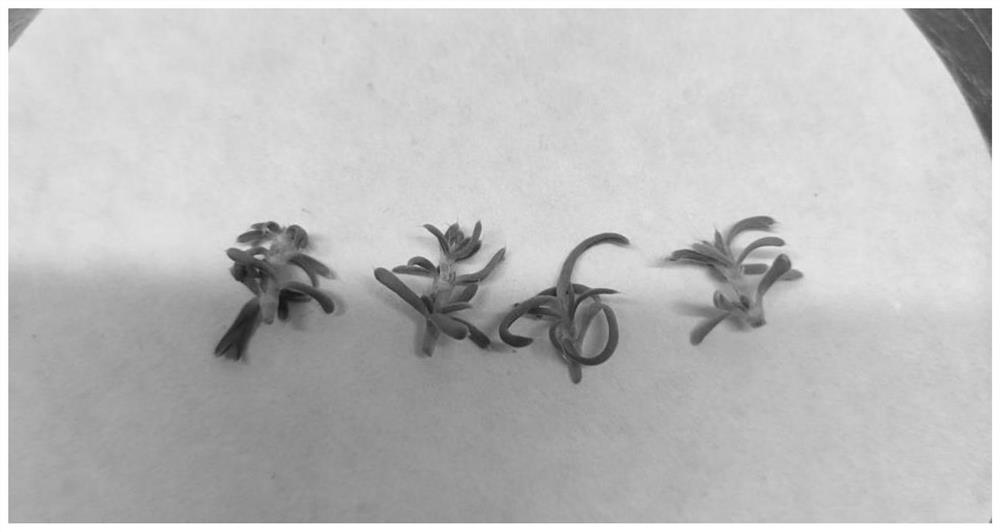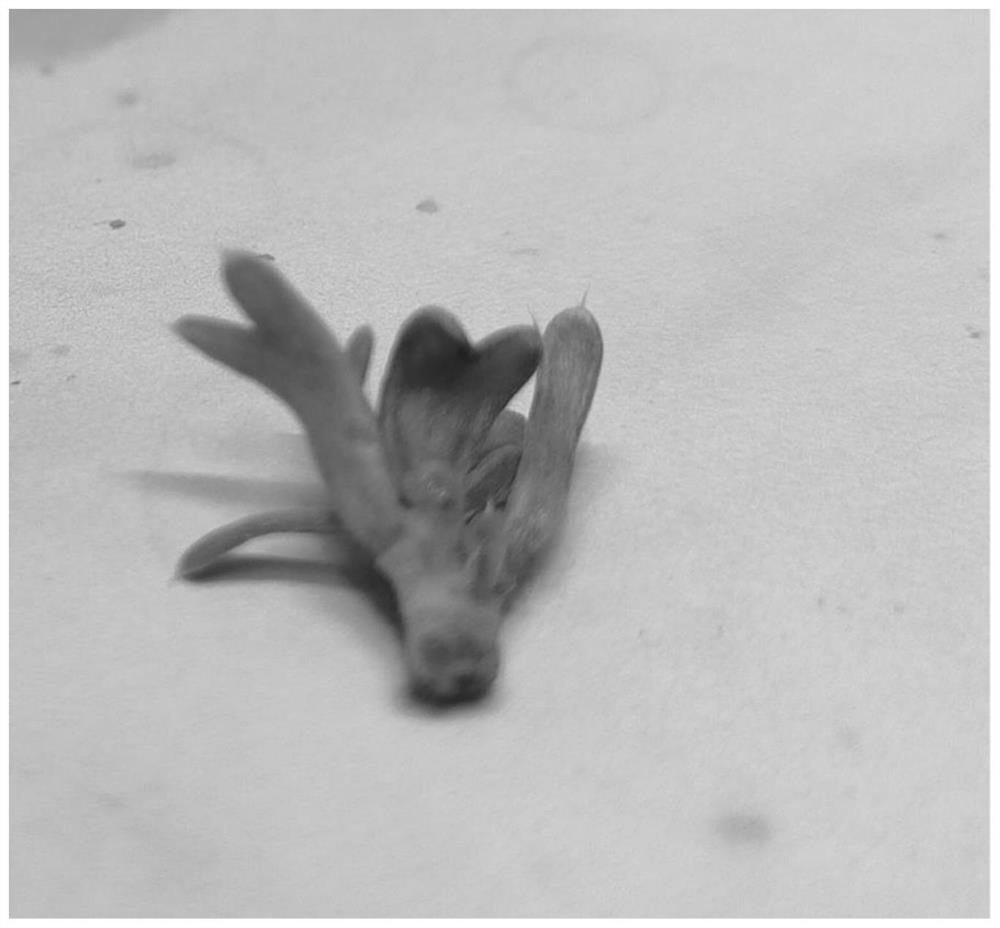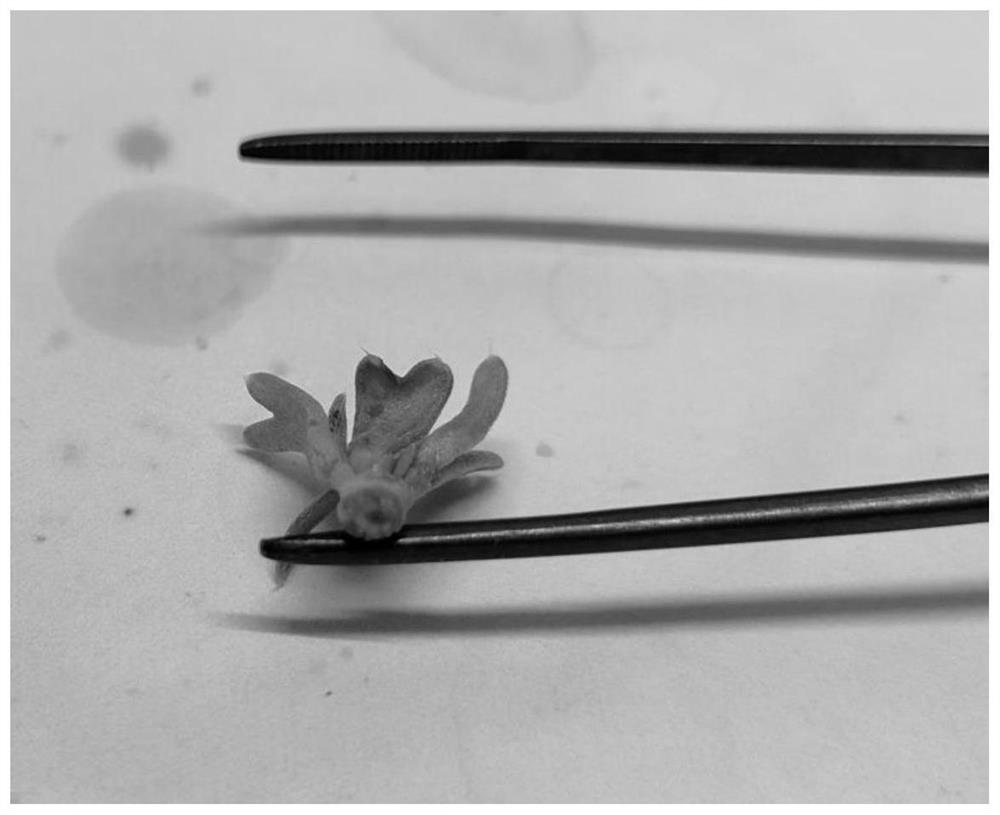Tissue culture propagation method of endangered rare plant tetraena mongolica
A quadruple tree, tissue culture technology, applied in botany equipment and methods, plant regeneration, gardening methods, etc., can solve problems such as loss of germination ability, unfavorable pollination, chromosome variation, etc.
- Summary
- Abstract
- Description
- Claims
- Application Information
AI Technical Summary
Problems solved by technology
Method used
Image
Examples
Embodiment 1
[0051] A method for tissue culture propagation of endangered and rare plant quadrangle wood, comprising the steps of:
[0052] The collection of explant: choose the annual (yellow-green), 6-August quadrangle new branch as explant;
[0053] What the above-mentioned scheme selects for use is the new shoot of one year as the explant, is because the old shoot of two years and above is mostly used as the explant for routine selection. Experiments have proved that it is difficult to directly induce rooting of old shoots as explants.
[0054] Pretreatment of explants: the collected explants are segmented, each segment is 4-5 cm. Rinse under running water for 3 minutes, soak in cleaning agent (two drops of Tween reagent in the water submerged in explants) for 8 minutes, rinse with running water for 30 minutes again after soaking, and place in a sterile container after rinsing.
[0055] The above cleaning agent is a mixture of Tween and water with a volume ratio of 1:1000. The opera...
Embodiment 2
[0062] A method for tissue culture propagation of endangered and rare plant quadrangle wood, comprising the steps of:
[0063] The collection of explant: choose the annual (yellow-green), 6-August quadrangle new branch as explant;
[0064] Pretreatment of explants: the collected explants are segmented, each segment is 4-5 cm. Rinse under running water for 5 minutes, soak in detergent (two drops of Tween reagent in the water submerged in explants, Tween: water (V / V)=1:1000) for 10 minutes, then rinse with running water for 25 minutes after soaking , placed in a sterile container after washing;
[0065] Complete the explant treatment: soak the above-mentioned explants in the sterile container in 70% ethanol for 15 seconds, soak in 0.1% mercuric chloride (mercury chloride) for 5 minutes, and rinse twice for 5 times Afterwards, finish the processing of explant;
[0066] Primary proliferation and strong seedling culture: inoculate the above-mentioned explants that have completed...
experiment example
[0070] Cut the collected annual quadrangle wood explants into about 5 cm long sections, rinse them under running water for 5 min, and put them into water with Tween (in the water submerged in the explants, drop two drops of Tween reagent, spit Temperature: soak in water (V / V)=1:1000) for 8 minutes, rinse with running water for 30 minutes, and then transfer to ultra-clean bench for processing. Transfer the pretreated quadrangle wood explants to a sterilized container for disinfection. First soak in 75% alcohol for 20s, pour off the alcohol, and then use 0.1% HgCl 2 After soaking for 8 minutes, rinse with sterile water 5 times to complete the treatment of explants. This process is different from other explants. The action should be gentle, and the sterilization process should not be shaken violently. This is because the petiole junction of the quadrangle wood is very thin. If the action is violent, the leaves will fall off. The explant is an injury. After the explants are col...
PUM
 Login to View More
Login to View More Abstract
Description
Claims
Application Information
 Login to View More
Login to View More - R&D
- Intellectual Property
- Life Sciences
- Materials
- Tech Scout
- Unparalleled Data Quality
- Higher Quality Content
- 60% Fewer Hallucinations
Browse by: Latest US Patents, China's latest patents, Technical Efficacy Thesaurus, Application Domain, Technology Topic, Popular Technical Reports.
© 2025 PatSnap. All rights reserved.Legal|Privacy policy|Modern Slavery Act Transparency Statement|Sitemap|About US| Contact US: help@patsnap.com



